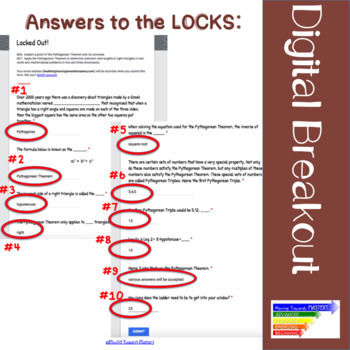
If both of your parents had acne, you're likely to develop it too. Such changes are common during puberty or pregnancy. People of all ages can get acne, but it's most common in teenagers.
#STUDENT BREAKOUT EDU ANSWERS SKIN#
After acne has cleared, the affected skin may be darker (hyperpigmented) or lighter (hypopigmented) than before the condition occurred. Pitted skin (acne scars) and thick scars (keloids) can remain long-term after acne has healed. People with darker skin types are more likely than are people with lighter skin to experience these acne complications: Nonoily cosmetics don't interfere with the effectiveness of acne drugs. Cosmetics don't necessarily worsen acne, especially if you use oil-free makeup that doesn't clog pores (noncomedogenics) and remove makeup regularly. In fact, scrubbing the skin too hard or cleansing with harsh soaps or chemicals irritates the skin and can make acne worse. Eating chocolate or greasy food has little to no effect on acne. These factors have little effect on acne: Stress doesn't cause acne, but if you have acne already, stress may make it worse. Further study is needed to examine whether people with acne would benefit from following specific dietary restrictions. Studies indicate that consuming certain foods - including carbohydrate-rich foods, such as bread, bagels and chips - may worsen acne. Examples include drugs containing corticosteroids, testosterone or lithium. Hormone changes during midlife, particularly in women, can lead to breakouts too. Androgens are hormones that increase in boys and girls during puberty and cause the sebaceous glands to enlarge and make more sebum. Other pores in your skin, which are the openings of the sweat glands, aren't usually involved in acne.Ĭertain things may trigger or worsen acne: Blockages and inflammation deep inside hair follicles produce cystlike lumps beneath the surface of your skin. Pimples are raised red spots with a white center that develop when blocked hair follicles become inflamed or infected with bacteria. But actually the pore is congested with bacteria and oil, which turns brown when it's exposed to the air.

A blackhead may look like dirt stuck in pores. Or the plug may be open to the surface and darken, causing a blackhead.

The follicle wall may bulge and produce a whitehead. Hair follicles are connected to oil glands.

Painful, pus-filled lumps under the skin (cystic lesions)Īcne usually appears on the face, forehead, chest, upper back and shoulders.Large, solid, painful lumps under the skin (nodules).Pimples (pustules), which are papules with pus at their tips.The resulting rupture within your skin may form boil-like inflammation.Īcne signs vary depending on the severity of your condition: Cystic acne - the most severe form of acne - occurs when oil and dead skin cells build up deep within hair follicles.


 0 kommentar(er)
0 kommentar(er)
